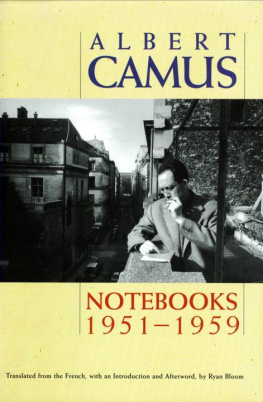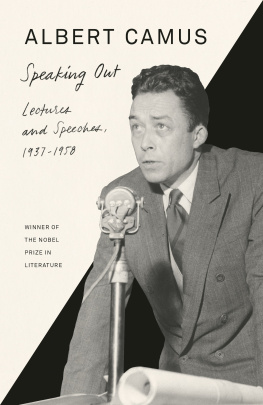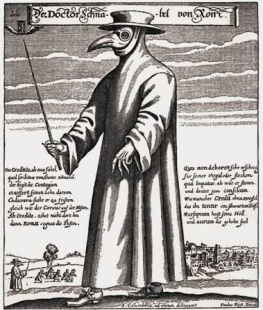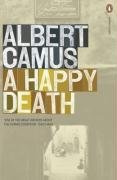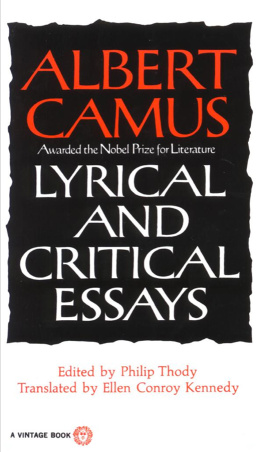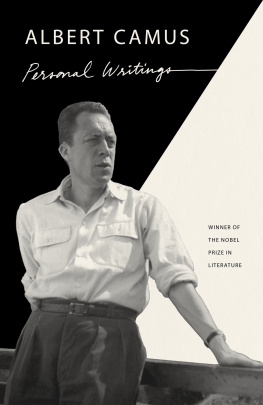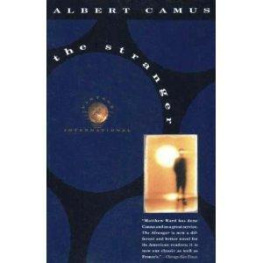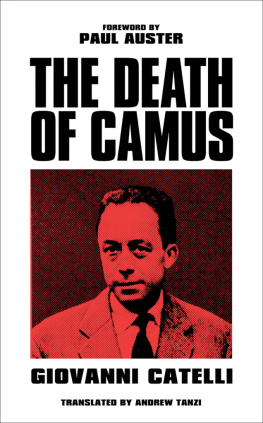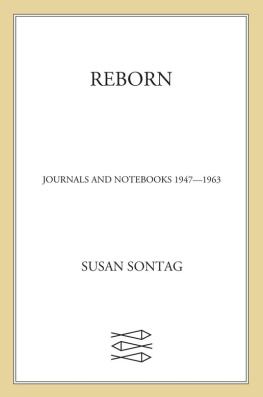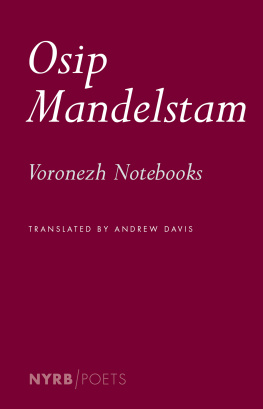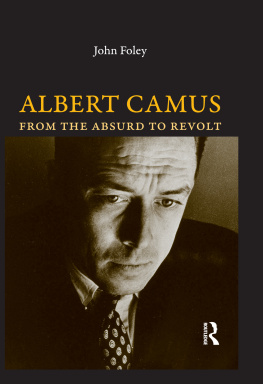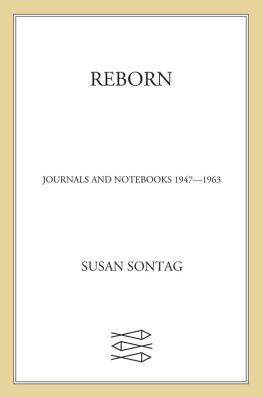TRANS1,ATE, 1) FROM TIIE FR ENCE1, \VLI'II AN INTRODUCTION AND AFTERWORU, BY RYAN BLOOM




ACKNOWLEDGMENTS
MY PROFOUND, deepest gratitude goes to Dr. Hassan Hodjati for his immense and invaluable aide with this manuscript: Je ne saurais jamais assez vous remercier. To my parents, without whom: nothing. To Herbert Lottman and Oliver Todd for their exquisite biographies of Camus. And to Francine and Keivan Hodjati, Ariane Bernard, Veronique de Crom- brugghe, Christen Aragoni, and Thomas Field, all of whom have helped improve this text. Any existing imperfections are, of course, my own.
R. B.
Paris
June 2007
TRALN'SL,ATOR'S NOTE
A WRITER'S N(rrEBOOK is a peculiar thing. To look at a writer's raw notebooks, his unpolished jottings, is to see a man, to know his works, and to watch them grow. It is to get a taste of the life, the human being, behind the books and essays, even when that person has seemingly tried not to reveal himself.
Some might contend that Camus always intended to publish his cahiers (as he called them), or, at the very least, that by 1954 the thought had crossed his mind when he began to have formal typescripts made of the first seven volumes. Whether it proves intent or not, we do know that Camus corrected these seven typescripts as they were being prepared. In the United States, after his death, the first six of these cahiers were published in two volumes, Notebooks 1935-1942 and Notebooks 1942-1951. Of the cahiers contained in those previous volumes, some were fully corrected by the author and some only partially corrected in various stages and drafts. In this third and final volume of Camus' Notebooks, only the very first cahier (VII) was made into a typescript while the author was still living, and even this one was only partially corrected by the author before his death.
As established in the original French edition, the rest of what follows-cahiers, letters, and notes-was taken straight from the original handwritten source, unadulterated, unaltered save for a few proper names. Thus these final cahiers presented a series of translation challenges not fully present in the two earlier volumes. Throughout the manuscript, occasionally there occurs a word or series of words that Camus' small, tight script renders completely illegible; over the years many have joked that only four people could ever read his handwriting: his wife, his lover, his daughter, and Camus himself (and sometimes even they had to use a magnifying glass to do so). Similarly, in some spots Camus' script seems decipherable, but certainty is impossible; these occurrences have been recorded with the note "questionable reading" or "unclear word," to indicate the possibility of alternative interpretations. One can assume what they will about the earlier Notebooks, but these last volumes, as evidenced, come to us in the raw.
This being the case, I have gone to great lengths to try to preserve the manner of these last notebooks accurately in their translation into English. These entries are not always solid pieces of polished prose; they are often notes at the rudimentary level, they do not always contain complete sentences or thoughts, and they are indeed often ambiguous. Occasionally an entry will trail off, or words will be dropped in a sort of shorthand; sometimes Camus has "dinner with B.M." and sometimes just "Dinner B.M." Sometimes we read of The Fall or The Possessed, and sometimes just of Fall or Possessed. Occasionally we get long, complex, intricate sentences, and at other times short, clipped, elliptical sentences. These differences, though sometimes slight, are clearly present in the original French, and when possible they have been maintained in the English translation.
Although, for the sake of clarity, grammar and punctuation have been edited in places, for the most part, even when an entry appears less than grammatically perfect, even when a question mark or quotation mark is missing, as long as this is how Camus recorded the original entry, no changes have been made for the English translation. The intent of this precision is to lend a certain authenticity to the true flavor of these last notebooks, sometimes seemingly composed, other times apparently only cryptic notes the author himself would fully understand.
That said, the greatest liberty taken with this translation involves the insertion of commas, without which many of these entries would prove quite difficult to read and decipher. An examination of Camus' handwritten drafts, even of formal works such as Le Premier Homme, reveals that the author often eschewed spaces, commas, and even periods. While fidelity has been held as an essential ingredient in translating the particular manner of these writings, in certain places clarity, at the sentence level, seemed just as necessary.
Finally, all the quotations cited here by Camus have been translated from the French version that he recorded in these cahiers, not from their original source language. In the case of quotations originally appearing in English, often their French counterparts contain slight differences in wording and structure, differences that have been preserved here as Camus wrote them.
Translating these cahiers has been an incredible journey, an incredible insight into the final years of one of the French language's most enduring writers, a voice still so relevant today, perhaps even more so than in the past. My sincere hope is simply that you will enjoy these final pages and final thoughts, this final and most personal glimpse, as much as I did.
EDITORS' NOTE
[from the French edition]
THIS THIRD VOLUME of the Notebooks includes cahiers VII, VIII, and IX, kept by Albert Camus from March 1951 until his death. Cahier VII, from March 1951-July 1954, was typed up while the author was still living and was partially corrected by him. This is undoubtedly the reason cahier VII contains passages that are not in the original manuscript. On the other hand, certain pages of the manuscript were removed, undoubtedly by the author, in the typed version.
In the following notebooks, a notation has been made each time one or more words could not be deciphered. In addition, for understandable reasons, we have removed some proper names and changed some initials.

